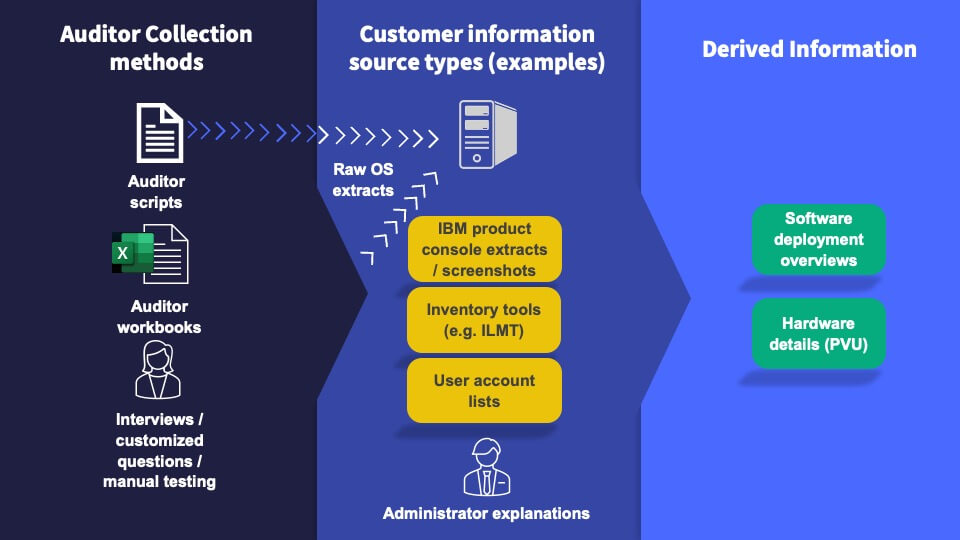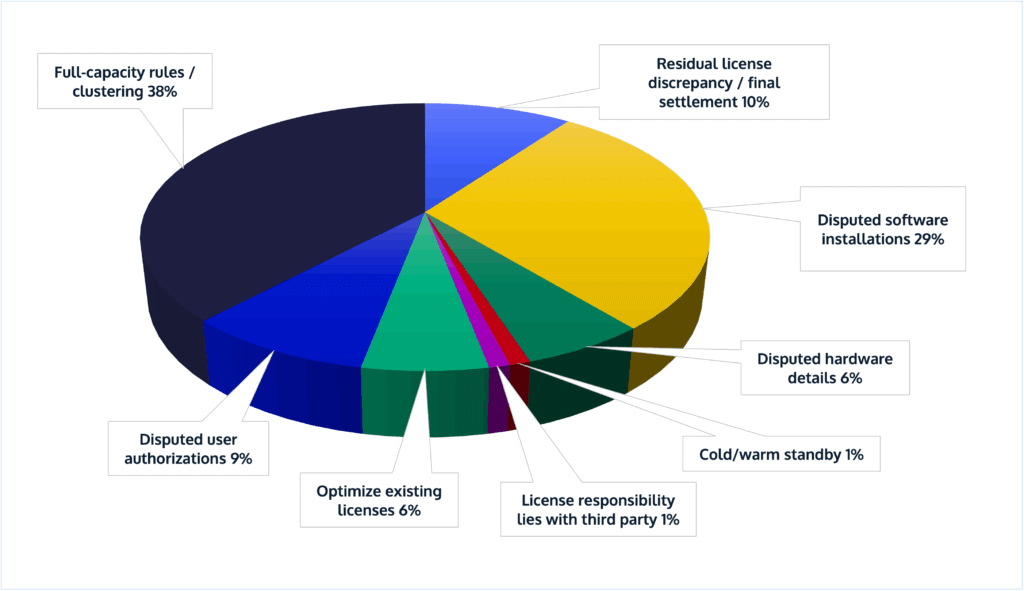IBM License Compliance: How to review the Draft Audit Report
Don’t rush the draft ELP phase. Learn how to spot errors, correct assumptions, and collaborate with stakeholders before IBM sees your final audit results.
Quick recap:
In our last blog, we explored how to interpret and respond to IBM’s audit data requests. Not every request is mandatory or relevant, and blindly sharing everything can inflate license exposure. We showed how to evaluate each request’s purpose, challenge unnecessary disclosures, and add critical context early—before they turn into expensive audit findings.
Now that you have provided the requested data, the next step is reviewing what the auditors have done with it.
What is the Draft ELP?
After data submission, IBM’s auditors will compile a draft Effective License Position (ELP)—a report outlining your compliance status and any identified shortfalls. But this draft is not final. It’s your opportunity to:
✅ Fix incorrect assumptions
✅ Add missing context
✅ Influence the final outcome.
1. Verify Accuracy
Auditors often rely on assumptions to fill in data gaps, and IBM licensing is rarely one-size-fits-all. Make sure the ELP:
- Matches your actual software usage and entitlements
- Correctly reflects deployment methods
- Interprets licensing metrics appropriately

2. Spot Errors in Interpretation
Even experienced auditors can misread IBM’s licensing rules—especially the License Information (LI) documents. Look for:
- Wrong license metric (e.g. PVU vs. AU)
- Misclassified non-production environments
- Unbundled or redundant installations

This chart highlights common arguments that have helped reduce draft shortfalls.
3. Get Internal Stakeholders Involved
Your technical and business teams will know best whether the auditor’s report is accurate. Make time for a joint review, ideally with:
- System administrators
- SAM or procurement leads
- Product owners
They can flag inconsistencies and provide missing documentation.
4. Provide Written, Detailed Feedback
Auditors may accept corrections—but only if clearly supported. For every issue you find:
- 📌 Prepare a written response
- 📎 Attach documentation
- 🗨️ Add comments directly to the ELP if allowed
Your goal is to show that any “discrepancy” is explainable or invalid.
5. Push Back on Timeline Pressure
Auditors often push for a two-week turnaround—but you’re not obligated to rush. Take the time needed to ensure accuracy. Once the ELP is finalised and shared with IBM, your leverage is greatly reduced.
Final Thoughts
Treat the draft ELP as your final chance to shape the audit outcome before IBM gets involved. A thorough review can eliminate unnecessary shortfalls and reduce financial exposure.
- ✅ Check assumptions
- ✅ Fix interpretation errors
- ✅ Involve the right people
- ✅ Push for clarity
- ✅ Document everything
Looking ahead
In our next blog, we’ll show how to challenge IBM’s proposed remediation path by exploring alternative license types, negotiating fairer outcomes, and turning audit pressure into licensing flexibility.

Want to access the full guide on IBM license compliance audits? Download it here:
Mastering IBM License Compliance Audits
This guide is part of our ongoing blog series that breaks down complex IBM compliance topics into digestible posts, offering practical advice and actionable strategies to help you maintain compliance.
- Preparation is Key
- How to Meet Sub-Capacity Requirements
- Importance of a Non-Disclosure Agreement
- How to Negotiate the Audit Scope
- Why You Need a Central Contact Person
- Understanding Data Requests in Audits
- How to Review the Draft Audit Report
- Exploring Licensing Alternatives
- Following up on Settlement Obligations
- Documenting Audit Data Collection
- 10 Lessons Learned from IBM Audits
About the Author

Koen Dingjan, IBM Service Director
Koen is a seasoned expert in IBM licensing with nearly two decades of experience. A former Deloitte auditor, he has led over 60 IBM compliance reviews and developed an industry-recognised IBM compliance certification course. At ITAA, Koen helps clients manage IBM license compliance, defend against audits, and optimize license management strategies.

